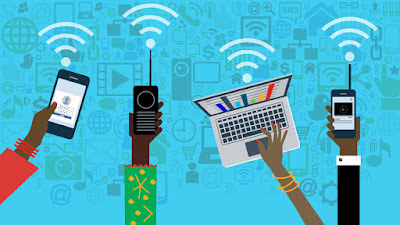IS USING INTERNET SAFE?


As well as new technologies, Internet-based computer threats have evolved over the decades, to the point that today they have become one of the main concerns of people and companies who need to keep their devices safe and protect information from diverse nature. In this regard, a study is prepared on security risks in information technology (IT), revealed that 82% of companies worldwide have suffered between one and five incidents of exposure, leakage or data loss in the last 12 months. As a result of these kinds of incidents, 10% of them lost access to critical information for a week and 15% experienced outages that prevented them from conducting business for more than seven days.
Precisely due to these latent risks, information security has become a real priority for companies of all scale, with special emphasis on SMEs, organizations that tend to be more vulnerable to these attacks.Therefore, here we detail the
four most frequent computer attacks today and the prevention and correction
measures recommended to face them.
1. Malware
The malware or software malware
is a category of software designed to infiltrate and damage an information
system without being detected. Although malware is employed to refer during a
general thanks to malicious software, there are differing types of malware that
answer their own characteristics and different behaviors. Among the most used
malware, the virus stands out, a malicious code that infects the files on the
device in the form of an executable file (or .exe file), and which uses the
ignorance of users to infect a computer.
Other known malwares are worms (software
somewhat more sophisticated than viruses, which creates copies of itself in
order to affect other computers), Trojans (programs designed to enter security
systems and allow access to other malicious files ), spyware (programs that spy
on a device to obtain private information and that can install other malicious
software ) and the now famous ransomwares , which hijack the valuable
information of a device, in order to request a transfer in cryptocurrency or
digital currencies by way of rescue.
To minimize the danger of malware,
it's important to possess powerful antivirus software. In
the case of companies, additionally, staff must be trained so that they do not
open email attachments from unknown or unreliable sources.
2. DDoS attack
It is one of the most frequent
attacks on the Internet. Also known as "denial of the distributed
service" (which comes from the English "distributed denial of service"),
it consists of blocking access to a site web and, simultaneously, the attack on
the server by entering a large volume of junk information (for example, filling
in forms with false data or sending requests). This causes a saturation in the
server flow, crashes the website or determines the loss of connectivity in this
space. Typically, these attacks they are made through computers infected with
Trojans.
A basic measure to take to avoid
a DDoS attack is to add the protection option against this type of attack to
the firewall or to install an anti-DDoS system or a best antivirus software
that gives protection against this type of threat. Although the most advisable
thing is to ask the Internet service provider to enable DDoS protection from
your network, since it has a greater protection capacity and the attack is
mitigated before consuming resources from the contracted Internet.
3. Phishing
The Phishing is a method used by
attackers to impersonate a user or company by an electronic communication
(email, instant messaging, etc.), in order to obtain personal and banking data.
Although phishing is not a direct
attack against a website or its servers, this method seeks to divert the flow
of customers, income or searches to a fake portal. Although it focuses its
attacks on stores or online sales portals, phishing is additionally frequent on
sites that provide financial services or on those websites that maintain a
constant flow of credit. A persistent way of forcing user confusion is by
advertising the looks of the fake site on internet and even paying to seem
first in search engines.
To avoid falling into this type
of attack, it is important to verify that the sender of any email corresponds
to the entity to which it claims to belong and that it does not contain strange
letters or characters. Another way to identify these fake sites is to observe
that the "safe site" label appears in the address bar and to be wary
of links inserted in our e-mails.
4. Baiting
It consists of an attack aimed at
infecting computers and networks from removable storage devices such as
pen-drives, SD cards or external hard drives. Through these computers,
attackers introduce files infected with malware. As it is a malicious software
that enters externally to the computer, the attack strategy is usually to place
these external storage devices in the vicinity of the company, in order for
them to be used and connected to corporate computers by staff.
Logically, the best way to avoid
an attack of this type will be to make your collaborators aware of the
importance of not connecting unknown storage devices and only using those
inventoried by the company and having full security by using antivirus in your device
Comments
Post a Comment